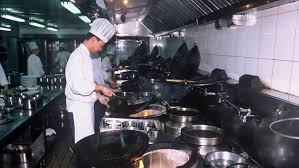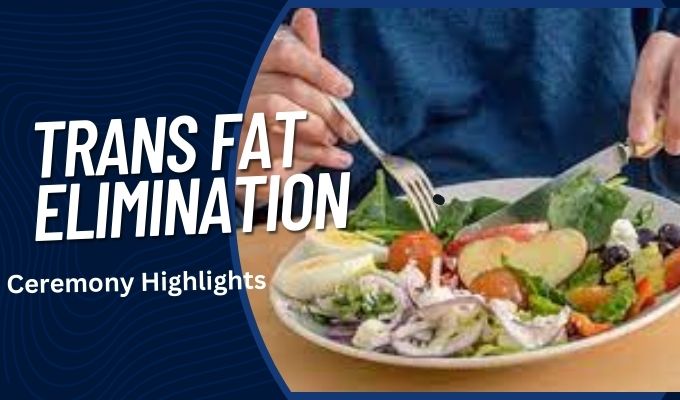Welcome to a groundbreaking gathering, the High-level event Trans Fat Elimination Ceremony Highlights! Today marks a pivotal moment in our journey towards healthier living. Imagine a world where harmful trans fats are a thing of the past, where our foods promote well-being instead of risk. This ceremony celebrates the diligent efforts of individuals and organizations committed to eliminating trans fats from our diets. It’s a testament to our collective dedication to health and longevity. As we come together to validate this milestone, we herald a future where every bite nourishes without compromise. Join us in embracing this transformative step towards a healthier tomorrow!

Introduction:
Welcome to the guide on the High-level event: Trans fat elimination validation ceremony. In this guide, we’ll explore the significance of eliminating trans fats from our diets and the journey leading up to the validation ceremony. Let’s delve into understanding trans fats, global efforts towards their elimination, preparation for the ceremony, key participants, the program schedule, addressing challenges and solutions, stakeholder engagement, and finally, concluding remarks.
Understanding Trans Fats:
Trans fats are unsaturated fats with trans-isomer fatty acid chains, often found in processed foods. They raise bad cholesterol levels and increase the risk of heart disease.
Global Efforts Towards Elimination:
Numerous countries and organizations have undertaken initiatives to eliminate trans fats from food supplies, aligning with WHO guidelines to promote healthier dietary practices.
The Road to Validation:
The journey towards validation involves rigorous assessment of food products to ensure compliance with trans fat elimination regulations. This process requires collaboration between regulatory bodies, food manufacturers, and health organizations.
Preparation for the Ceremony:
Organizers meticulously plan logistics, invitations, and venue arrangements to ensure the success of the validation ceremony. Stakeholder engagement plays a crucial role in garnering support and participation.
Key Participants:
Key participants include government officials, health experts, food industry representatives, and community leaders. Their collective efforts drive the momentum towards trans fat elimination.

Program Schedule:
The ceremony features speeches, panel discussions, and presentations highlighting achievements and challenges in trans fat elimination. It also includes recognition of exemplary efforts and future commitments.
Addressing Challenges and Solutions:
Challenges such as food reformulation, consumer education, and regulatory compliance are addressed through collaborative strategies involving all stakeholders. Innovative solutions are sought to overcome barriers to trans fat elimination.
Stakeholder Engagement:
Engaging stakeholders fosters collaboration and collective action towards trans fat elimination. Governments, businesses, healthcare professionals, and consumers all have a role to play in promoting healthier food environments.
Conclusion:
The High-level event: Trans fat elimination validation ceremony symbolizes a milestone in the global effort to improve public health. By eliminating trans fats from our diets, we

pave the way for a healthier future for generations to come. Let’s continue working together to ensure that everyone has access to nutritious and safe food choices.
FAQS:
Q1:What is the validation program for trans fat elimination?
The validation program for trans fat elimination involves implementing policies and regulations aimed at reducing or eliminating the presence of trans fats in food products. This includes monitoring and enforcing compliance with trans fat limits set by regulatory authorities.
Q2:What is the trans fat elimination program?
The trans fat elimination program typically consists of a multi-faceted approach involving government regulations, industry initiatives, and public awareness campaigns. This may include banning or restricting the use of partially hydrogenated oils (a major source of trans fats), promoting healthier alternatives, and educating consumers about the risks associated with trans fat consumption.
Q3:How do you reduce trans fat levels?
Reducing trans fat levels involves several strategies, such as reformulating food products to use healthier oils, such as those high in unsaturated fats like olive, canola, or sunflower oil, and minimizing the use of partially hydrogenated oils. Additionally, food labeling and consumer education play a crucial role in helping individuals make informed choices about their dietary intake of trans fats.
Q4:WHO report on global trans fat elimination?
The World Health Organization (WHO) has issued reports and guidelines advocating for the global elimination of trans fats. These reports highlight the health risks associated with trans fat consumption, the benefits of eliminating them from the food supply, and recommendations for policymakers, industry stakeholders, and consumers to achieve this goal.


